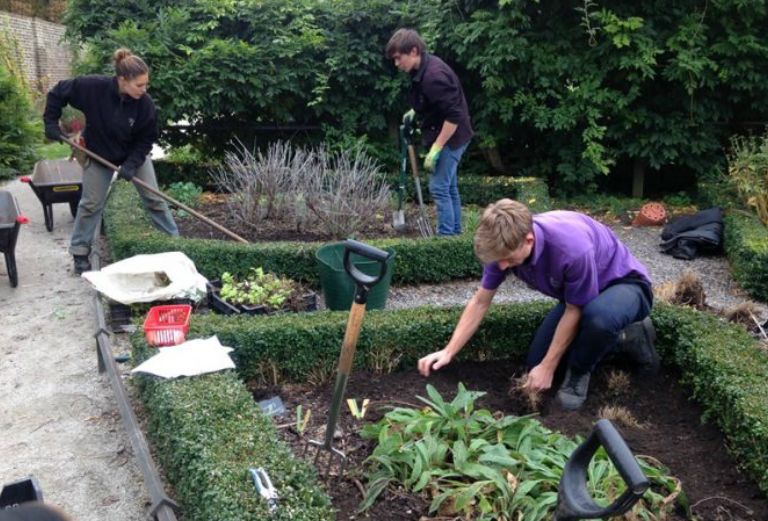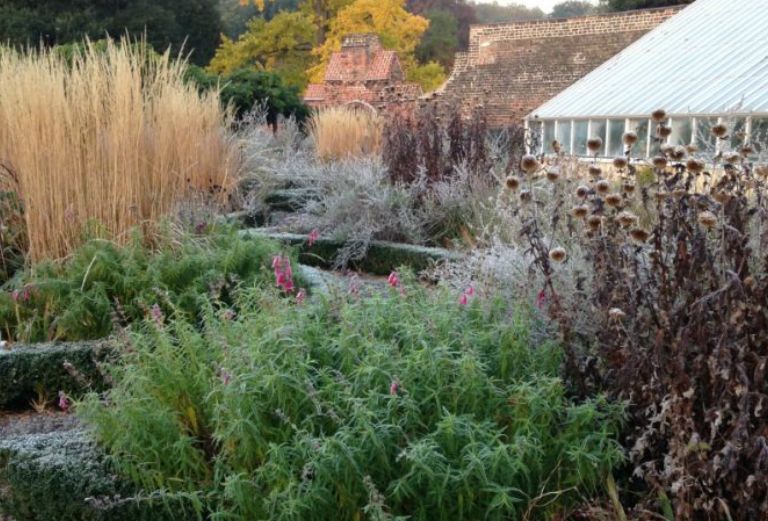
by Josh Bennett, garden apprentice
Autumn and winter are the ideal time for taking stock of the garden. As leaves drop and plants fade, we can look to assess how the garden has performed over the year and begin to make changes for the next. It is a particularly good time for tending to herbaceous perennials. Not only can they be cut back – unless there is a desire to retain attractive seed heads – many plants can also be dug up, divided and replanted. This has a number of benefits: new plants can be created, the vigour of existing plants can be maintained and beds can be redesigned into more suitable layouts.
The knot garden here at the Palace was planted three and a half years ago. Lifting and dividing should be carried out approximately every three years, so it was due for some maintenance. With each bed we started by cutting the plants back, with the exception of the penstemons as they prefer a spring prune. The beds were then weeded before digging up the plants. Border forks were used for the shallower rooting plants such as Rudbeckia fulgida var. deamii and Filipendula ulmaria ‘Aurea’, whilst more heavy duty spades were used for those plants with big tap roots. With the plants out of the ground they could then be divided. There are a couple of ways of doing this, either the classic method of using two forks side by side to split the plant or by slicing plants into sections with a spade. I found the latter method very effective when dealing with the Agapanthus ‘Torbay’ and Clematis heracleifolia ‘Cassandra’, which had become really quite woody. The plants were grouped into crates as we forked over the soil and incorporated compost. We covered them to ensure that moisture loss by any wind was limited.
Once the beds were ready, the plants were placed out. This is an important step as any plants that haven’t been performing can be moved into better positions, certain plants that complement each other can be coupled together and space is given to each group to maximize light and air flow. Having been in the ground for four years there were some pretty heavy reductions. This was notably with the tall grass of Calamagrostis x acutiflora ‘Karl Foerster’, the rudbeckias, various irises, clematis and Cephalaria gigantea. The resulting plants have been potted up by our team. These will be for sale next year, once they have rooted. There are also a number of bare root plants available for sale on the market barrow now. Make sure to stop by the vinery to see what we have on offer.
